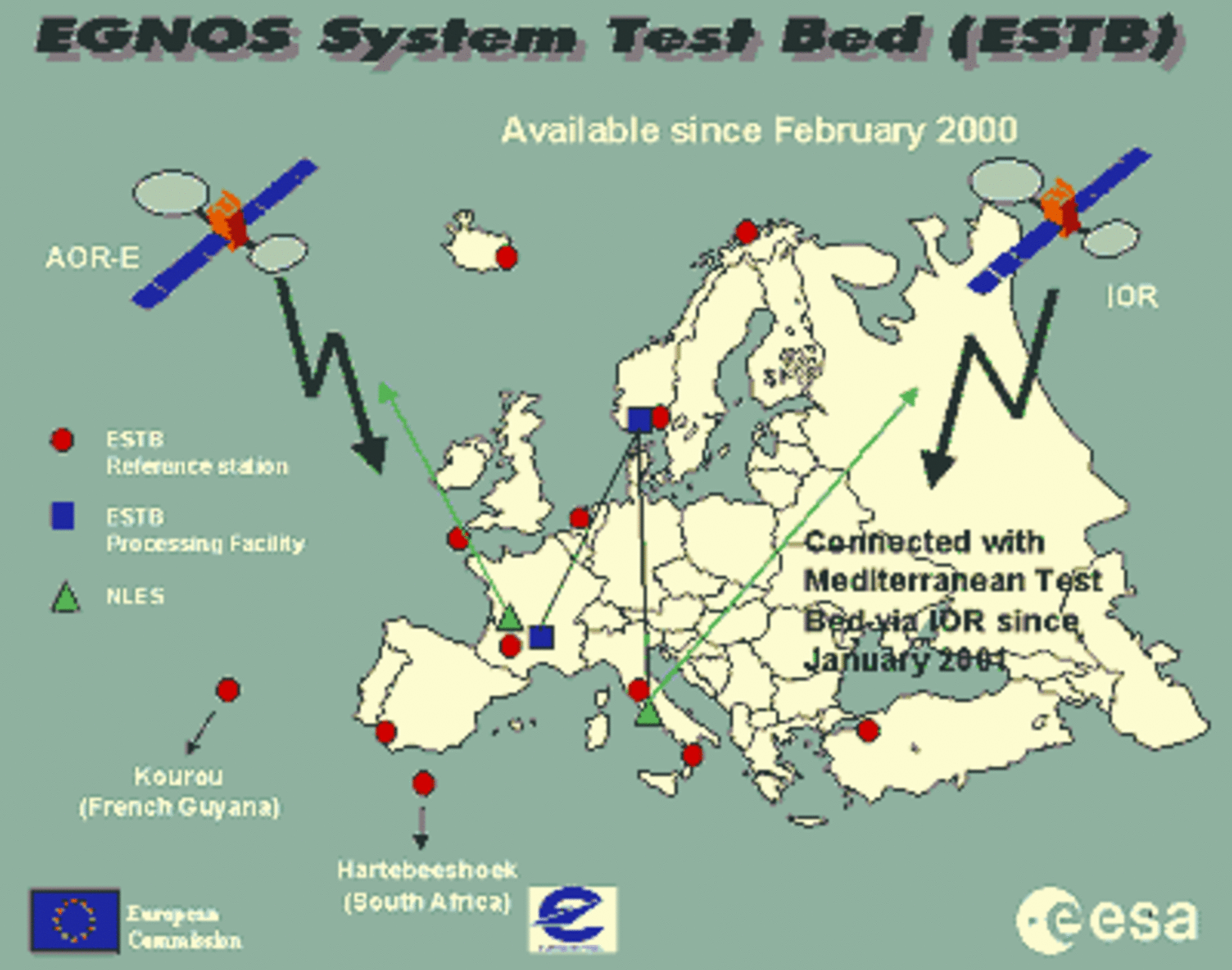The EGNOS test bed
Before EGNOS becomes fully operational in 2004, airline pilots and others equipped with an EGNOS receiver can tune into a test signal broadcast by one of the EGNOS satellites, Inmarsat AOR-E (Atlantic Ocean Region – East). “The test signal is broadcast over most of Europe. It doesn’t have the service guarantees the full service will have, but it’s enough to get people acquainted with EGNOS and what it can offer,” says Hans Fromm, Deputy Head of the Navigation Department at ESTEC. Test signal broadcasting began in February 2000. The area over which it is available will be extended shortly when Inmarsat IOR (Indian Ocean Region) also begins broadcasting on a continuous basis later this year.
The redundancy that will be built into the fully-fledged service is not yet available, as only a fraction of the full complement of EGNOS ground facilities are operating. Only about 10 ranging integrity monitoring stations (RIMS), dotted about Europe, and one processing centre are collecting data for modulation onto the EGNOS signal. The RIMS send the data they have collected on the GPS and GLONASS signals to a single processing centre in Norway, which computes the corrections needed for each satellite and incorporates them into a signal. The processing centre then sends the signal via terrestrial networks to a station in Toulouse, France for up-linking to the AOR-E satellite. It will shortly also send the signal to a station in Fucino, Italy for up-linking to the IOR satellite. EGNOS users will receive the signal from one of these two satellites on specially designed EGNOS receivers.
Since the first EGNOS signal was switched on, around 10 demonstrations and one workshop for potential users have been held. Information on the EGNOS test bed is available on www.esa.int/navigation






